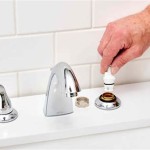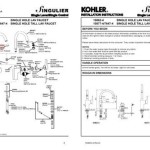How to Repair Bathroom Wall Tiles
Bathroom wall tiles are susceptible to damage over time due to moisture, humidity, and the constant use of the space. Cracks, chips, and loose tiles can detract from the aesthetic appeal of the bathroom and necessitate repair. This article provides a comprehensive guide on how to repair bathroom wall tiles efficiently and effectively, covering various scenarios from minor cracks to loose or broken tiles.
Assessing the Damage
The first step in repairing bathroom wall tiles is a thorough assessment of the damage. Carefully examine the affected tiles, noting the extent and severity of the damage. Consider the following:
- Cracks: Determine if the cracks are hairline or more substantial, and if they extend through the grout or the tile itself.
- Chips: Evaluate the size and location of chips, considering whether they are on the surface or the edge of the tile.
- Loose Tiles: Identify the cause of looseness, such as damaged grout, a broken tile, or a weak bond to the wall.
After assessing the extent of the damage, you can determine the appropriate repair method. Minor cracks can be addressed with grout sealant, while loose tiles might require re-grouting or even re-adhering with tile adhesive.
Repairing Minor Cracks
For hairline cracks in bathroom wall tiles, a grout sealant can effectively prevent further damage and enhance the aesthetics of the tile. Follow these steps to apply grout sealant:
- Clean the Crack: Remove any dirt or debris from the crack using a toothbrush and a cleaning solution specifically designed for grout. Allow the crack to dry completely before proceeding.
- Apply Grout Sealant: Use a small brush or a syringe to apply grout sealant to the crack. Ensure that the sealant fills the entire crack for optimal results.
- Smooth the Sealant: After applying the sealant, use a damp cloth to smooth and wipe away any excess sealant. Allow the sealant to dry completely according to the manufacturer's instructions.
This method effectively conceals hairline cracks and prevents them from widening or spreading. It's a cost-effective and relatively simple solution for addressing minor damage.
Repairing Chipped Tiles
Chips on bathroom wall tiles can be unsightly and require repair. There are two primary methods for repairing chipped tiles: using a tile repair kit or filling the chip with epoxy putty.
Using a Tile Repair Kit
Tile repair kits are specifically designed for filling chips and cracks in tiles. These kits typically contain epoxy resin, hardener, and a colorant that can be mixed to match the tile color. Follow these steps to use a tile repair kit:
- Clean the Chip: Remove any loose debris or dirt from the chipped area using a toothbrush and a cleaning solution. Dry the chip thoroughly.
- Mix the Repair Material: Combine the epoxy resin and hardener according to the manufacturer's instructions. The mixture should be thoroughly mixed to ensure consistent curing.
- Fill the Chip: Apply the mixed resin to the chipped area, carefully pressing it into the chip. Allow the resin to cure completely according to the instructions.
- Sand and Polish: Once the resin has cured, use fine-grit sandpaper to smooth the repair area and match the surrounding tile surface. Polish the area to restore a smooth finish.
Using Epoxy Putty
Epoxy putty offers a quick and convenient way to repair chipped tiles. This material is easy to mold and can be smoothed to match the surrounding tile surface. Follow these steps to use epoxy putty:
- Clean the Chip: Remove any loose debris from the chip using a toothbrush and a cleaning solution. Allow the chip to dry completely.
- Knead the Putty: Knead the epoxy putty until it becomes pliable and smooth. The consistency should be similar to modeling clay.
- Fill the Chip: Apply the putty to the chipped area, pressing it firmly into the chip. Use a finger or a putty knife to smooth the putty and create a seamless surface.
- Allow to Cure: Allow the putty to cure completely according to the manufacturer's instructions. Once cured, the putty will be hard and durable.
Both methods provide effective solutions for repairing chipped tiles. Choose the method that best suits your preference and the specific needs of your bathroom tile.
Repairing Loose Tiles
Loose bathroom wall tiles can be a safety hazard and require prompt attention. The cause of looseness can vary, ranging from damaged grout to a weak bond to the wall. Here are steps to repair loose tiles:
Re-Grouting Loose Tiles
If the tile is loose due to damaged grout, re-grouting can restore its stability. Follow these steps:
- Remove Old Grout: Use a grout removal tool or a utility knife to carefully remove the old grout from the affected areas. Ensure that the grout is completely removed for optimal results.
- Clean the Area: Clean the area thoroughly with a grout cleaning solution and a brush. Allow the area to dry completely.
- Apply New Grout: Mix new grout according to the manufacturer's instructions and apply it to the repaired areas. Use a grout float to spread the grout evenly and press it firmly into the gaps.
- Clean Excess Grout: After the grout has set for a few minutes, use a damp sponge to wipe away any excess grout. Allow the grout to dry completely.
Re-Adhering Loose Tiles
If a tile is loose due to a weak bond with the wall, it may require re-adhering with tile adhesive. Follow these steps:
- Prepare the Area: Clean the back of the tile and the wall surface to remove any dirt or debris. Ensure both surfaces are dry.
- Apply Tile Adhesive: Apply a thin layer of tile adhesive to the back of the tile, using a notched trowel to create grooves for better adhesion.
- Press the Tile: Carefully press the tile back into its original position, ensuring it is level and secure.
- Support the Tile: Use tile spacers or shims to keep the tile in place while the adhesive dries. Allow the adhesive to cure completely according to the manufacturer's instructions.
These methods effectively address loose tiles and restore their stability. Remember to choose the appropriate method based on the underlying cause of looseness.

Collins Diy Survival Demos How To Fix A Broken Tile

How To Remove Replace One Bathroom Tile Ceramic Repair

Water Damage Behind Shower Tiles

Why Ed Tiles In Your Bathroom Are A Problem Shower Sealed

Bathroom Ceramic Tile How To Repair Tiles

Fix Discolored Damaged Bathroom Tiles Total Koatings
A Quick And Dirty Bathroom Water Damage Repair Thumb Hammer

How To Prevent Expensive Bathroom Shower Tile And Grout Repair Promaster Home Handyman

Home Improvement Bathroom Wall Tile Repair

A Quick And Dirty Bathroom Water Damage Repair Thumb Hammer
Related Posts







